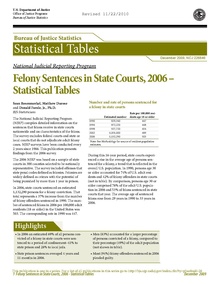Classification and categorisation

| The examples and perspective in this section may not represent a worldwide view of the subject. You mayimprove this article, discuss the issue on the talk page, or create a new article, as appropriate. (January 2010) (Learn how and when to remove this template message) |
Categorisation by type
The following classes of offences are used, or have been used, as legal terms of art:[clarification needed]
· Offence against the person[30]
· Violent offence[31]
· Sexual offence[31]
· Offence against property[30]
Researchers and commentators have classified crimes into the following categories, in addition to those above:
· Forgery, personation and cheating[32]
· Firearms and offensive weapons[33]
· Offences against the State/offences against the Crown and Government[34]/political offences[35]
· Harmful or dangerous drugs[36]
· Offences against religion and public worship[37]
· Offences against public justice[38]/offences against the administration of public justice[39]
· Public order offence[40]
· Commerce, financial markets and insolvency[41]
· Offences against public morals and public policy[42]
· Motor vehicle offences[43]
· Conspiracy, incitement and attempt to commit crime[44]
· Inchoate offence
· Juvenile delinquency
· Victimless crime
Categorisation by penalty
One can categorise crimes depending on the related punishment, with sentencing tariffs prescribed in line with the perceived seriousness of the offence. Thus finesand noncustodial sentences may address the crimes seen as least serious, with lengthy imprisonment or (in some jurisdictions) capital punishment reserved for the most serious.
Common law
Under the common law of England, crimes were classified as either treason, felony or misdemeanour, with treason sometimes being included with the felonies. This system was based on the perceived seriousness of the offence. It is still used in the United States but the distinction between felony and misdemeanour is abolished in England and Wales and Northern Ireland.
Classification by mode of trial
The following classes of offence are based on mode of trial:
· Indictable-only offence
· Indictable offence
· Hybrid offence, a.k.a. either-way offence in England and Wales
· Summary offence, a.k.a. infraction in the US
Classification by origin
In common law countries, crimes may be categorised into common law offences and statutory offences. In the US, Australia and Canada (in particular), they are divided into federal crimes and under state crimes.
Other classifications
· Arrestable offence
U.S. classification

Felony Sentences in State Courts, study by the United States Department of Justice.
In the United States since 1930, the FBI has tabulated Uniform Crime Reports (UCR) annually from crime data submitted bylaw enforcement agencies across the United States.[45] Officials compile this data at the city, county, and state levels into the UCR. They classify violations of laws based on common law as Part I (index) crimes in UCR data. These are further categorized as violent or property crimes. Part I violent crimes include murder and criminal homicide (voluntary manslaughter), forcible rape, aggravated assault, and robbery; while Part I property crimes include burglary, arson, larceny/theft, and motor-vehicle theft. All other crimes count come under Part II.
For convenience, such lists usually include infractions although, in the U.S., they may come into the sphere not of the criminal law, but rather of the civil law. Compare tortfeasance.
Booking arrests require detention for a time-frame ranging 1 to 24 hours.